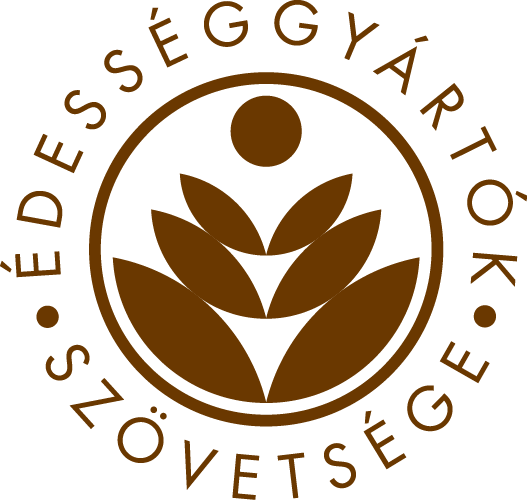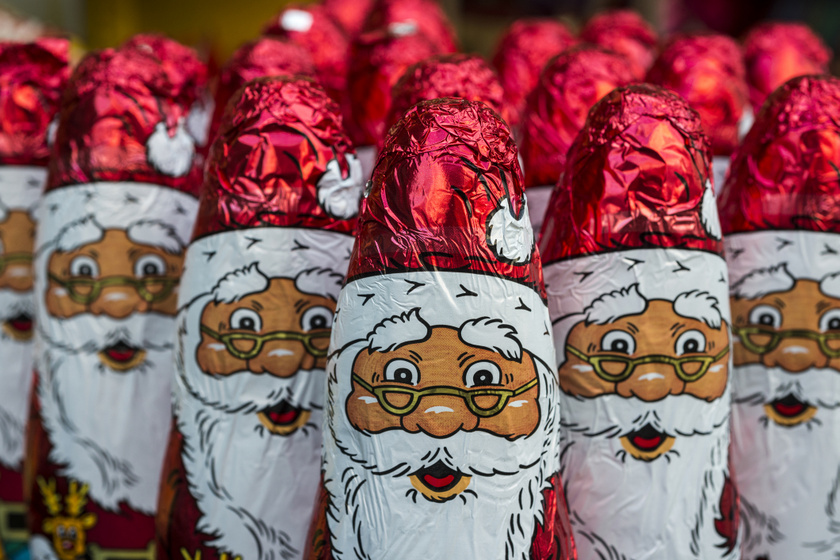Suppliers are responding to changes in prices, costs and legislation with innovation, while consumers are adapting and experimenting, the Association of Hungarian Confectionery Manufacturers pointed out at its end-of-year press event, where it also revealed the flavour combinations that the ‘Christmas Candy (szaloncukor) of the Year’ will tempt you with.
Although we have seen lower confectionery sales in the last two years, the nominal value of trade is increasing, and consumers are turning their attention to quality products, said Sándor Sánta, President of the Association of Hungarian Confectionery Manufacturers, in his opening speech.
For example, the price of cocoa, one of the most important raw materials, has been on a rollercoaster ride this year – from USD 4,000 in January to over USD 10,000 in April, then through a series of steep falls and peaks to USD 6,000 and even USD 5,000, before jumping back to USD 8,000 in November, where it has stabilised for now. Alongside this, other commodities have also become much more expensive, with the price of sugar rising by around 50% worldwide. Although the latter has had little impact on domestic producers, chocolate price has risen by 10% year-on-year in Q3 of this year, compared with the food price inflation of around 3%.
Costs of production are also increasing, with wages and freight rates up over 10%, packaging materials such as paper and aluminium foil up over 50-70%, and natural gas prices have also been on a similar trajectory to cocoa all year. The weakening of the Forint is also having a negative impact on industry players, as their products, with the exception of biscuits, are largely made from imported raw materials.
However, confectionery manufacturers are responding to the mounting challenges with innovations. As the Christmas season approaches for example, chocolate Santas supercharged with surprising flavours and textures are appearing with caramel, gingerbread and rice flake toppings while in Western Europe, 3D printed chocolate figures are also being added to the offering.
Other products are also being updated with retro soft drink flavours, intense fruit flavour combinations and a blend of textures, and are being supplied in new types of packaging, such as smaller, bite-sized packs. They also come with free-from versions, although these are less sought-after by consumers who are usually open to trying new flavours, textures and formats – those who buy sweets and are in good health typically want to indulge themselves.
Sándor Sánta said that the biggest bite out of the domestic confectionery market, which is estimated at around HUF 380 billion at shelf price, will be taken in the November-December period, with a value of around HUF 50 billion. He predicts that 8-9 million chocolate Santas will be put in baskets this year, approaching 400 tonnes in quantity with a total value of just over HUF 2 billion. For Christmas, we could buy around 3.5 tonnes of Christmas candy (szaloncukor), worth more than HUF 15 billion.
Christmas candy – a Hungaricum and quality foodstuff
Although fondant is of a French origin and arrived to Hungary in the 19th century via German mediation, the Christmas candy has become an important product of the Hungarian sweet- and confectionery industry and, in its own way, is an indispensable part of Christmas, so this June it was included in the collection of Hungaricums.
Confectionery manufacturers can now apply for the award of the Foodstuff of Excellent Quality (KMÉ) trademark in the Christmas candy product category, said Beáta Olga Felkai, Deputy State Secretary of the Ministry of Agriculture. The KMÉ trademark is currently one of the highest levels of recognition in this field in Hungary, referring to both the safety and quality of food – for example, the National Food Chain Safety Office (Nébih) certification is a prerequisite for applying – as well as sustainable production processes.
Indonesia is one of the world’s leading producers of palm oil, accounting for 4% of the country’s gross domestic product and 30% of its agricultural output. This provides the livelihood of over 17 million people, said Seress Nuraini Novianti, a student and Scientific Students’ Conference candidate at the Budapest University of Economics and Business, who presented the results of her own research at the press event. Indonesia also accounts for 45% of European imports of palm oil, which is a key ingredient in confectionery and much cheaper than other vegetable oils. However, EU regulations to increase sustainability impose requirements that are harder for smaller producers to meet, and more than half of Indonesia’s palm oil producers (55%) are small-scale manufacturers.
Gábor Intődy, Secretary General of the Association of Hungarian Confectionery Manufacturers, also pointed out the challenges arising from changes in legislation, taxes and product fees. While 10% of the tax revenues from the public health product tax (NETA) will be managed by the highly transparent Active Hungary State Secretariat from 2025 onwards and will transparently serve prevention, healthy eating and the promotion of mass sports, the tax rate remains high and will also affect natural and sugar-free products. Another big question mark is how the state expects to collect 14% more from NETA in 2025 compared to the 2024 budget revenue plan of HUF 85 billion, totalling HUF 97 billion under the recently adopted state budget law. Meanwhile, sales volumes of products typically covered by the tax are on a steady downward trajectory.
The Extended Producer Responsibility (ERP) levy to promote the circular economy is also strikingly high by European standards, to the detriment of competitiveness. And the EUDR, the European Union’s regulation on deforestation-free products, will put small and micro-enterprises in particular on a difficult path, with significant administrative tasks, risk management and certification obligations – with fines of up to 4% of revenue or the burden of stock seizures. A majority of EU manufacturers, governments and trade associations have called for a one-year delay to the planned EUDR introduction in 2025, which is expected to be voted for by the European Parliament.
Last but not least, Ádám Kovács and Gergely Kovács, the founders and promoters of the award, announced the winners of the ‘Christmas Candy of the Year 2024’ competition categories at the press event. The main prize was awarded to the Stühmer’s pear jelly – champagne flavoured festive sweet.

